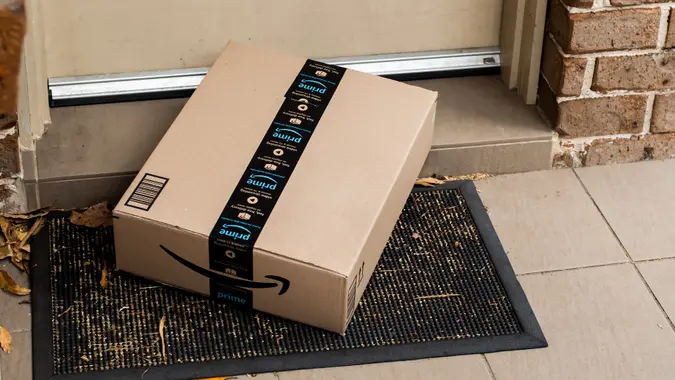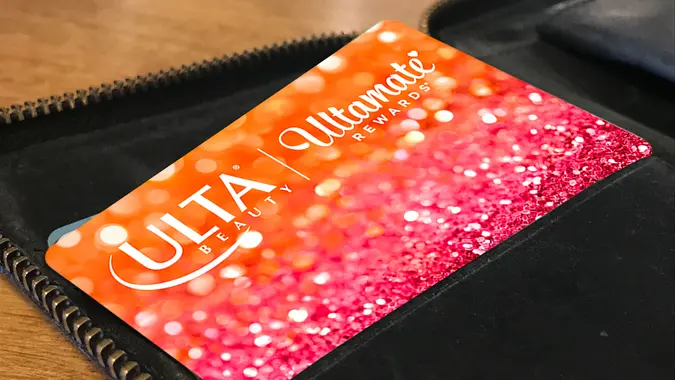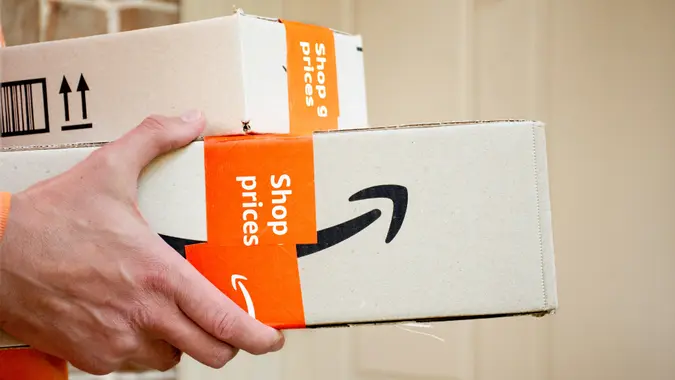5 Signs You’re Spending Too Much on ‘Cheap’ Items

Commitment to Our Readers
GOBankingRates' editorial team is committed to bringing you unbiased reviews and information. We use data-driven methodologies to evaluate financial products and services - our reviews and ratings are not influenced by advertisers. You can read more about our editorial guidelines and our products and services review methodology.

20 Years
Helping You Live Richer

Reviewed
by Experts

Trusted by
Millions of Readers
Scoring a bargain can feel like a financial win, especially when your budget is tight. However, what seems like saving money could actually be costing you.
Here’s how to recognize the signs that you’re overspending on cheap stuff — and how to make sure those buys are actually helping your budget.
1. You’re Continually Replacing Cheap Goods
Some cheap items are inexpensive for a reason. Low-quality stuff might initially seem affordable, but it often breaks or wears out quickly. You’re left with the cost of replacing or repairing such items.
If you intend to use an item only once, buying cheap may be the way to go. However, if it’s a multi-use item, such as a tool, an appliance or a pair of shoes, paying more for quality upfront may save you money in the long run.
2. Your Stockpile Is Overstocked
Mark Cuban once wrote to NPR’s Uri Berliner, “The money you save by investing in bulk will provide a better return on investment than any investment vehicle on the planet.”
Cuban’s advice is sound. Stocking up when prices are low can save you significant amounts of money. However, overstocking on bargains can lead to wasted money if you can’t remember buying them or can’t find them when you actually need them. If any of those products have expiration dates, such as over-the-counter medicines or canned goods, they could go bad before you can even use them.
Keep an inventory of your stockpile so you always know what you have and how much — and refer to it before buying any more.
3. You Shop With Bargains Rather Than Your Budget in Mind
Do you often buy something just because a deal seems too good to resist? According to Capital One Shopping, 67% of consumers have made impulsive purchases because of sales.
The occasional cheap impulse buy won’t damage your budget. However, a frequent deal-shopping habit can.
Anytime the satisfaction of scoring a deal drives your urge to buy, consider how much you’ll save by not buying at all rather than how much of a discount you’re getting on the item’s original price.
4. You Have an ‘It’s Only’ Mindset
Telling yourself that “it’s only $5” may seem harmless. However, frequent purchases that stem from this mentality can chip away at your budget. It’s easy to overlook the impact of these small buys, but $5 and $10 purchases can easily add up to hundreds of dollars over a few months if you aren’t careful — money you could have used to reach your long-term financial goals.
Every expenditure has an opportunity cost. Once the money is spent, you no longer have it for another use. Thinking about what you’re potentially giving up by making a cheap, unnecessary purchase can help you make wiser spending decisions over the long term.
5. You Often Wonder Where Your Money Went
If you end up over your budget for the month despite not making any expensive purchases, too many seemingly cheap buys may be to blame. You likely remember making one $200 purchase, but those cheap ones are quickly forgotten if you aren’t tracking them.
If you want the financial freedom to splurge on unexpected bargains, establish a budget category for such spending. Then, deduct every little purchase you make so you always know when you’ve hit your cheap-buys limit.
 Written by
Written by  Edited by
Edited by 

























